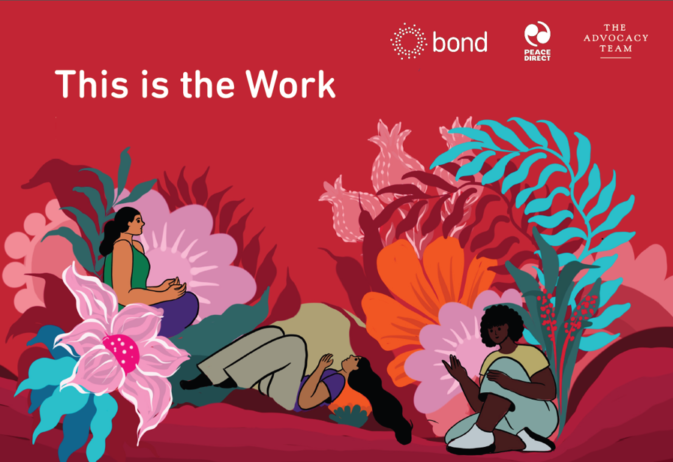10 ways to improve our response to women and girl’s nutrition in humanitarian contexts
The Global Humanitarian Overview estimates that 274 million people will require humanitarian assistance in 2022. This number has significantly increased from 2021, which was already the highest figure in decades.
Conflict, climate shocks, and the consequences of the Covid-19 pandemic have resulted in an unprecedented year for hunger. Women and girls are disproportionately affected due to their increased nutritional needs and vulnerabilities. They also experience additional risks because of disrupted health services, such as antenatal, postnatal, and obstetric care, and may be affected by barriers to accessing services, such as sexual violence.
With the current data available, we know that there are high rates of wasting and anaemia in pregnant and breastfeeding women and girls during emergencies, as well as the growing burden of people being overweight or obese.
Emergency Nutrition Network (ENN) recently wrote a technical brief summarising progress in nutrition programming for women and girls, aged10 to 49 years, in humanitarian contexts. We felt that the lack of research in emergency contexts and a dearth of programming for women’s and girls’ nutrition warranted a more specific focus, with our knowledge gaps becoming increasingly glaring to us over the past year.
Subscribe to our newsletter
Our weekly email newsletter, Network News, is an indispensable weekly digest of the latest updates on funding, jobs, resources, news and learning opportunities in the international development sector.
Get Network NewsWe heard reports of very high rates of pregnant and breastfeeding women being underweight in Tigray during the ongoing Ethiopian civil war, as high as 70%, with limited protocols and stocks of supplementary food to support them. We also heard about challenges in implementing the Joint UN (2007) statement supporting the use of multiple micronutrient supplements (MMS) in humanitarian contexts, an issue that the Healthy Mothers Healthy Babies Consortium are also working hard to support using advocacy and practical guides.
This led to the creation of our report which culminated in these 10 recommended ways to strengthen the response to women’s and girls’ nutrition in humanitarian contexts:
- More coherent, up-to-date guidance: we need a “living” guideline that is regularly updated and focuses on women’s and girls’ nutrition, or that brings together all relevant and accurate aspects from other guidelines.
- More “field-friendly” techniques for diagnosing malnutrition in women and girls: including measuring gestational weight gain, earlier diagnosis of micronutrient deficiencies and guidance on when BMI should and shouldn’t be used around pregnancy and breastfeeding.
- Empowerment of women and girls is important for nutrition, but we need to measure it to know what’s working: tools for measuring empowerment need to be prioritised in monitoring and assessment plans.
- More support is needed to implement MMS in the event of a crisis: in countries where iron and folic acid is the current standard, making a switch to MMS during an emergency is logistically challenging. Measures need to be taken to rectify this.
- Humanitarian stakeholders should all have gender equity policies: while some currently do, more are needed to ensure coherent progress in this area.
- More evidence is needed to advocate for the cost of poor nutrition in women and girls in emergencies: this would ultimately help generate more funding for the nutrition of women and girls in humanitarian response, which is currently a big challenge.
- Clarity on who does what: mapping out the clear roles of the various UN agencies involved in women’s and girls’ nutrition in humanitarian contexts would help to ensure coherence in programming.
- Inclusion of standard nutrition indicators for all women and girls in routine surveys: this will result in better planning and monitoring during emergencies.
- Preconception nutrition needs more evidence and programmes: this is currently a neglected area.
- Postnatal nutrition has evidence and guidance, but more needs to be done in practice: a good place to start would be following the WHO postnatal care guidelines.
The process of writing the report included conducting interviews with a variety of stakeholders, which enabled us to begin to advocate for action in this area even before the report was released. There is now some momentum to improve the response to women’s and girls’ nutrition in humanitarian contexts, leading to the crucial creation of the GNC taskforce for women’s nutrition, championed and co-chaired by UNICEF and ENN. This plans to tackle some of our recommendations, especially those relating to operational guidance.
While the 2021 Lancet Series on Maternal and Child Undernutrition Progress concluded that progress has been insufficient in the last few years to tackle women’s health in humanitarian crises, we now see this changing and believe there are some clear paths forward for improvements. We hope that the momentum continues and that we see even further advances in research, programming, policy, and donor communities going forward.
For more information, read the executive summary, or the full report (also available in French) here. Please let us know if you’d like to discuss any of these recommendations or if you’d be interested in implementing any of our suggestions. We are always on the lookout for new research or network collaborations.
Category
News & Views



